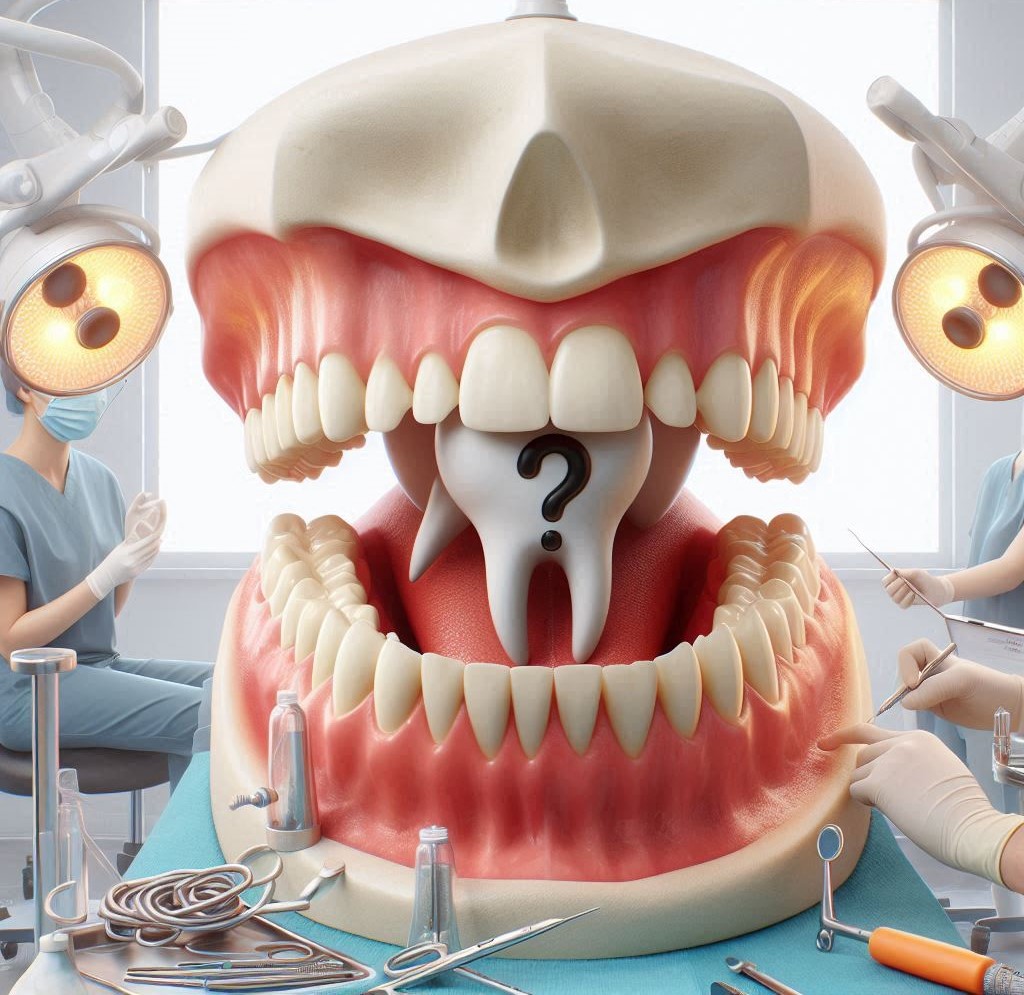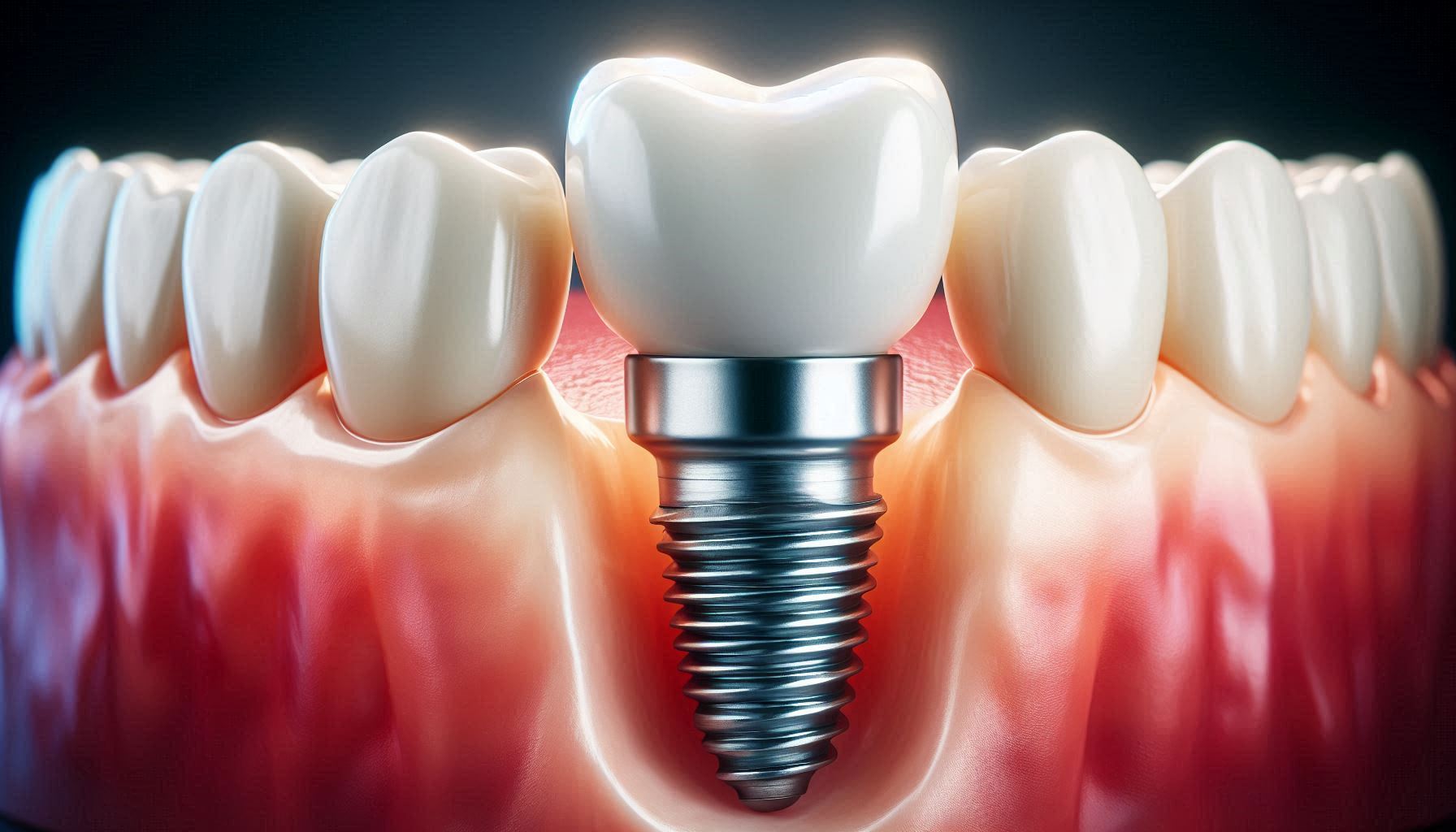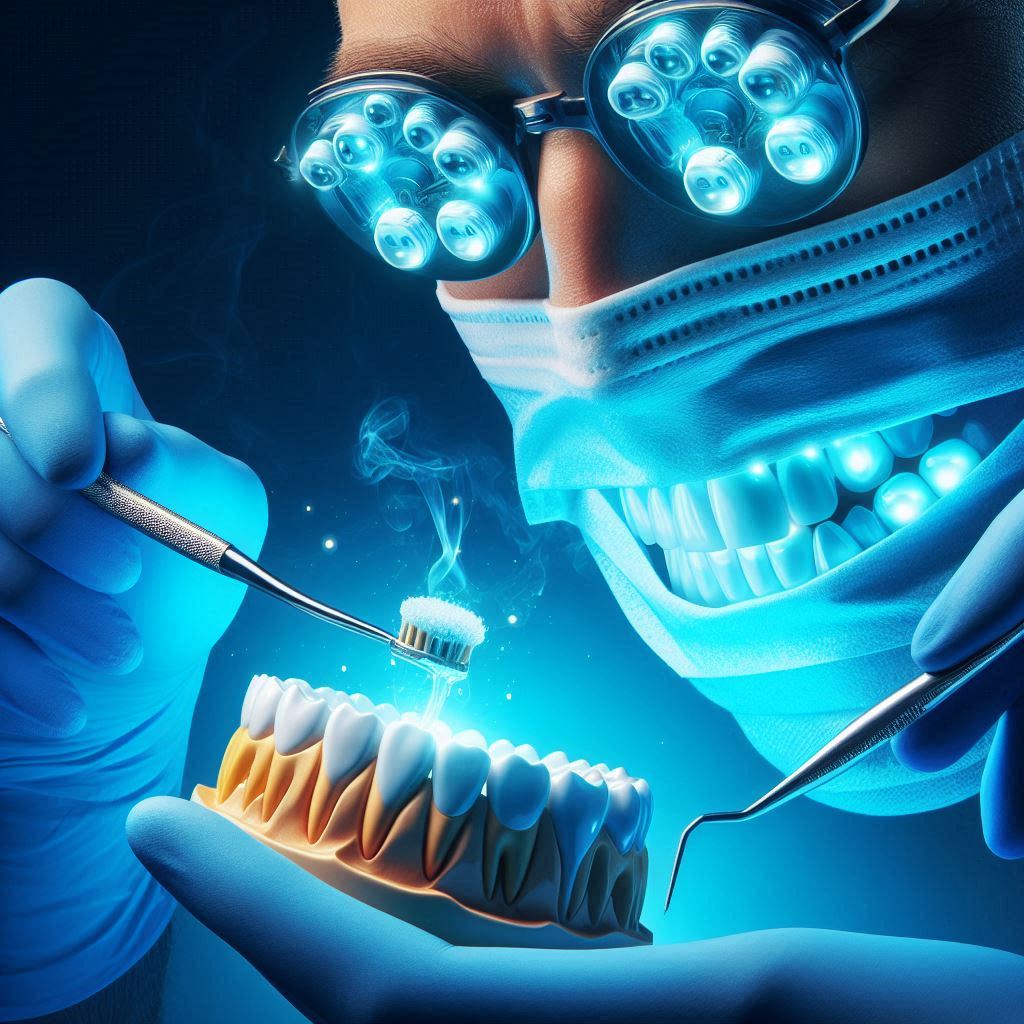Abnormal bone growth and extra teeth, though often overlooked in routine dental check-ups, can significantly impact both the health and aesthetics of an individual’s mouth. These conditions can arise for a variety of reasons—genetic factors, trauma, or even as a result of an underlying medical issue. While not all cases require surgical intervention, understanding when surgery becomes necessary is critical for maintaining long-term oral health.
This guide will provide detailed insights into the circumstances under which surgery may be required for excess bone growth or extra teeth in the mouth. By explaining the diagnostic process, treatment options, and factors that influence the need for surgery, we aim to help patients make informed decisions about their oral health care.
Understanding Abnormal Bone Growth and Extra Teeth
Excess Bone Growth: Excess bone growth, also known as osseous or bony overgrowth, can occur for a variety of reasons. This abnormal growth may happen in different parts of the jaw or skull and can interfere with normal mouth functions. Conditions like Tori (torus)—benign bony growths in the mouth—are common examples. These can appear on the roof of the mouth (palatal tori) or along the lower jaw (mandibular tori). Over time, these growths may become large enough to cause discomfort, affect speech or chewing, and even impede proper denture placement.
Another form of abnormal bone growth is related to conditions like fibrous dysplasia, a disorder where normal bone is replaced by fibrous tissue, leading to a softer, structurally weaker bone structure that can also lead to excessive growth.
Extra Teeth: Extra teeth, also known as supernumerary teeth, are another relatively common anomaly in dental development. Supernumerary teeth occur when additional teeth form in addition to the regular 32 permanent teeth. These teeth can develop anywhere in the mouth, although they are most frequently found in the upper front teeth area (mesiodens). Extra teeth can be categorized into:
- Supplemental teeth, which resemble normal teeth in appearance.
- Conical teeth, which are peg-shaped and may cause problems with the alignment of adjacent teeth.
These extra teeth may erupt normally, remain impacted (unable to erupt), or even cause cysts to form around them, creating potential complications.
Diagnosis of Abnormal Bone Growth and Extra Teeth
For both excess bone growth and extra teeth, early detection is key to effective treatment. The process typically begins with a thorough oral examination by a dentist, who may ask about symptoms such as pain, difficulty eating, or changes in the shape of the mouth.
- Diagnostic Imaging: X-rays are the most commonly used diagnostic tool for identifying excess bone growth and extra teeth. In some cases, more advanced imaging techniques such as CT scans (computed tomography) or
- MRI scans (magnetic resonance imaging) may be recommended to get a clearer view of the bone structure and detect deeper anomalies.
- X-rays help to determine the location, size, and nature of the abnormality. In the case of extra teeth, the X-ray can also reveal whether the teeth are impacted or if they pose any risk to surrounding tissues.
While most cases of excess bone growth or extra teeth are detected through standard exams and imaging, it’s essential that patients report any unusual symptoms, such as swelling or discomfort, to ensure early intervention.
Complications of Untreated Abnormal Bone Growth
If left untreated, excess bone growth can lead to several complications. These may range from functional issues to serious health risks:
- Impaired Functionality: Abnormal bone growth can affect how the jaw moves, making it difficult to chew, speak, or even swallow. For example, tori that grow large enough to impact the space for dentures can interfere with speech clarity and overall comfort.
- Aesthetic Concerns: The visual impact of excess bone growth, especially in the case of visible tori or abnormal bone protrusions, can cause self-esteem issues, leading some individuals to avoid smiling or speaking in public.
- Increased Risk of Infection: Bone growths, especially those that break through the gumline, may lead to infections or chronic inflammation. This can occur if bacteria accumulate around the bone growth and surrounding tissue.
- Damage to Surrounding Teeth: When abnormal bone growth occurs near existing teeth, it can lead to pressure on adjacent teeth, causing misalignment or root damage. In extreme cases, the bone growth may result in the loss of surrounding teeth.
Complications of Extra Teeth
Extra teeth, if left untreated, can lead to several oral health complications, including:
- Crowding and Misalignment: Supernumerary teeth can disrupt the eruption of adjacent teeth, leading to crowding, misalignment, and an overall irregular bite (malocclusion). This can make it more challenging to maintain oral hygiene and can lead to further dental complications.
- Increased Risk of Tooth Decay and Gum Disease: Extra teeth that are difficult to clean due to their position can be prone to plaque buildup, which can contribute to tooth decay, gum disease, and even abscess formation.
- Cyst Formation: In rare cases, supernumerary teeth can lead to cysts or tumors in the jaw. These cysts can cause pain, swelling, and potential damage to surrounding bone and teeth.
- Aesthetic Issues: Extra teeth can also affect the appearance of the smile, potentially causing self-consciousness, especially if they are visible in the front of the mouth.
Non-Surgical Treatment Options
Before opting for surgery, several non-surgical treatment options may be considered, especially in cases where the abnormal growth is not causing significant issues. Some of these options include:
- Observation: If the abnormal bone growth or extra teeth are not causing significant issues, the dentist may recommend simply monitoring the condition. Regular check-ups will allow the dentist to track any changes in the size or positioning of the growth.
- Orthodontic Treatments: For extra teeth causing alignment issues, orthodontic treatment, such as braces, may be effective in moving teeth into better positions. In some cases, it may be possible to address the issue with minimal intervention or by removing the supernumerary tooth early on.
- Medication: Anti-inflammatory drugs or pain relievers can help manage discomfort caused by abnormal bone growth or extra teeth, but these solutions are usually temporary and do not address the underlying problem.
When is Surgery Necessary for Excess Bone Growth?
Surgery for excess bone growth may be necessary when the abnormality begins to interfere with normal mouth functions or when conservative treatments fail to provide relief. The decision to proceed with surgery typically depends on the size, location, and impact of the bone growth, as well as the severity of symptoms.
Indications for Surgical Intervention:
- Discomfort and Pain: When abnormal bone growth causes persistent pain or discomfort that cannot be alleviated through conservative treatments (e.g., pain medication or anti-inflammatory drugs), surgery may be considered. For example, large tori can press against dentures or other oral appliances, causing significant irritation.
- Functional Impairment: If the bone growth impedes normal jaw movement, affecting speech, chewing, or swallowing, surgery may be necessary to restore function. Growths that interfere with a patient’s ability to use dentures or prosthetics are another indication for surgical removal.
- Aesthetic Concerns: When excess bone growth becomes visible and negatively affects a person’s smile or appearance, surgery may be pursued for cosmetic reasons. This is particularly common with tori that become large and noticeable in the mouth.
- Risk of Complications: If the abnormal bone growth leads to or increases the risk of complications like infection, damage to surrounding teeth or bone, or interference with dental work, surgical intervention may be needed to prevent further damage.
Types of Surgery:
- Bone Recontouring: This procedure involves reshaping the bone to reduce or remove the excess growth. Bone recontouring is typically done using local anesthesia and is minimally invasive. The procedure is quick, with most patients able to resume normal activities within a few days.
- Excision of Bone Spurs: In cases where bone spurs (sharp projections of bone) are causing discomfort or irritation, they can be surgically excised. Excision involves cutting away the bone spur, usually through a small incision in the gum tissue. The recovery time is generally short, and patients may need to follow up for monitoring.
Risks of Surgical Intervention: Like any surgery, there are potential risks associated with removing excess bone growth. These include:
- Infection
- Nerve damage (though rare)
- Bleeding
- Scarring
- Swelling and discomfort post-surgery
However, the risks are generally low when the surgery is performed by an experienced oral surgeon. Post-operative care can help minimize these risks and speed up the recovery process.
Post-Operative Care and Recovery: After surgery, patients typically need to follow a strict post-operative care regimen. This may include:
- Resting for a few days to avoid strain on the jaw
- Using ice packs to reduce swelling
- Taking prescribed antibiotics or pain relievers
- Avoiding hard, chewy foods that could irritate the surgical site
- Keeping the surgical site clean to prevent infection
The recovery period can vary depending on the extent of the surgery, but most patients are able to return to regular activities within one to two weeks.
When is Surgery Necessary for Extra Teeth?
Extra teeth (supernumerary teeth) may require surgical intervention if they pose a risk to dental health or aesthetics. These teeth can disrupt normal tooth eruption, cause misalignment, or increase the likelihood of cavities or gum disease.
Indications for Surgery:
- Tooth Impaction: When extra teeth fail to erupt and remain impacted beneath the gumline, they may need to be removed to prevent potential complications such as infection, cyst formation, or damage to adjacent teeth.
- Crowding and Misalignment: Supernumerary teeth can cause overcrowding in the mouth, making it difficult for other teeth to erupt properly. This can lead to malocclusion, bite issues, and difficulty cleaning teeth, which increases the risk of cavities and gum disease.
- Cyst Formation: In rare cases, extra teeth can be surrounded by cysts that can damage surrounding bone structures. If a cyst forms around a supernumerary tooth, it must be surgically removed to prevent further damage.
- Aesthetic Concerns: Extra teeth that are visible and affect the appearance of the smile may be surgically removed for cosmetic reasons, especially if they interfere with the alignment of the front teeth.
Types of Surgery:
- Tooth Extraction: The most common surgical procedure for extra teeth is extraction, which involves removing the tooth from the jawbone. This can be done under local or general anesthesia, depending on the complexity of the extraction.
- Simple Extraction: If the tooth has erupted through the gumline, it may be removed using forceps and local anesthesia.
- Surgical Extraction: If the tooth is impacted or embedded in the bone, an incision may be needed to access the tooth. In this case, a small amount of bone may also need to be removed to facilitate extraction.
- Cyst Removal: If a cyst has formed around the extra tooth, it may need to be removed in addition to the tooth. Cyst removal typically requires a more invasive procedure and may involve bone grafting to restore the jawbone.
Risks of Surgical Intervention: Similar to surgery for excess bone growth, the risks of extra teeth removal include:
- Infection
- Bleeding
- Swelling and bruising
- Damage to adjacent teeth or nerves (though rare)
However, these risks are generally manageable with proper surgical techniques and post-operative care.
Post-Operative Care: After the extraction of extra teeth, the patient will likely experience some pain, swelling, and bleeding for a few days. To ensure a smooth recovery, patients should:
- Follow the prescribed aftercare instructions
- Take pain medications as needed
- Avoid smoking, as it can delay healing
- Eat soft foods and avoid chewing directly on the surgical site
- Attend follow-up appointments to monitor healing
Types of Surgery and Techniques
In addition to traditional tooth extraction and bone recontouring, there are several advanced surgical techniques that can be employed to treat excess bone growth and extra teeth. These methods often result in quicker recovery times and less post-operative discomfort.
- Minimally Invasive Surgery: Minimally invasive techniques use smaller incisions, which results in less trauma to surrounding tissues. This approach is particularly useful for removing supernumerary teeth or reshaping small areas of excess bone growth.
- Laser Surgery: Laser technology can be used in both bone and soft tissue surgeries, including for the removal of extra teeth or reshaping the gums. Laser surgery offers several advantages, such as reduced bleeding, faster healing times, and less pain after the procedure.
- Robotic Surgery: In some advanced dental practices, robotic surgery is used to perform precise extractions and bone reshaping. This technology is especially useful for complex cases where precision is critical.
- Case Studies and Success Rates: Studies have shown that surgeries for excess bone growth and extra teeth have high success rates when performed by experienced oral surgeons. The recovery times and outcomes vary depending on the complexity of the case, but in general, patients who undergo surgery experience significant improvements in both oral function and aesthetics.
Cost Considerations for Surgery
Surgical treatment for excess bone growth and extra teeth can be costly, but it is important to consider the long-term benefits of improved oral health and function. The costs will vary depending on several factors, including:
- Type of procedure (bone recontouring, tooth extraction, etc.)
- Location and expertise of the oral surgeon
- Whether general anesthesia or local anesthesia is required
- Post-operative care and follow-up visits
- Insurance Coverage: Many dental insurance plans offer coverage for surgical procedures related to excess bone growth or extra teeth if they are deemed medically necessary. However, cosmetic procedures may not be fully covered. It is important to check with your insurance provider to understand your coverage and potential out-of-pocket expenses.
- Financing Options: For patients who do not have insurance coverage, many dental offices offer financing options or payment plans to make the surgery more affordable.
Recovery and Aftercare
After surgery, it is crucial to follow your oral surgeon’s instructions to ensure proper healing. The recovery period will vary based on the complexity of the surgery, but here are some general guidelines:
- Rest: Take it easy for the first few days following surgery. Avoid any strenuous activities that may interfere with healing.
- Pain Management: Over-the-counter pain medications or prescribed painkillers can help manage discomfort. If pain persists or worsens, contact your surgeon.
- Avoid Hard Foods: Stick to soft foods during the healing process, and avoid chewing directly on the surgical site to prevent irritation or damage.
- Follow-up Visits: Regular follow-up visits will ensure that the surgical site is healing correctly and that there are no complications.
Psychological Impact of Surgery
Surgery for excess bone growth or extra teeth can have a profound psychological impact, especially for individuals who are self-conscious about the appearance of their smile or oral health. While some patients may experience anxiety or fear about undergoing surgery, understanding the benefits and having a supportive care team can help alleviate those concerns.
After surgery, many patients report an improvement in self-esteem, as their ability to smile comfortably and eat without pain is restored. The removal of extra teeth or abnormal bone growth can lead to a significant improvement in both oral function and quality of life.
Preventive Measures and Maintenance
While surgery can effectively address excess bone growth and extra teeth, preventive measures can help reduce the need for future interventions. Regular dental check-ups, proper oral hygiene, and early intervention are crucial in preventing or managing these conditions. If any abnormalities are detected early, non-invasive treatments or monitoring may be enough to prevent the need for surgery.
Conclusion
Excess bone growth and extra teeth are conditions that can severely affect both the function and appearance of your mouth. While not all cases require surgery, it’s important to seek professional advice and explore your options if you’re experiencing discomfort, misalignment, or other complications. Early diagnosis and intervention can often prevent more invasive treatments down the line and help preserve your oral health.
Surgical options, when necessary, can provide lasting relief from pain and improve your ability to eat, speak, and smile with confidence. Whether you’re dealing with excess bone growth or extra teeth, it’s crucial to work closely with your dental team to determine the best course of action for your unique situation.
By taking the right steps and addressing these issues in a timely manner, you can enjoy better oral health and quality of life for years to come.
SOURCES
Greenwood, W. T. & Davenport, G. M. (2017). Management of supernumerary teeth and associated complications in pediatric dentistry. Journal of Pediatric Dentistry, 40(4), 283-290.
Jones, M. L. & Nelson, C. R. (2019). Surgical management of bony growths in the oral cavity: Indications and techniques. Oral Surgery Journal, 31(2), 145-154.
Smith, R. J., Chang, P. T., & Williams, T. L. (2020). The role of imaging in diagnosing abnormal bone growth and extra teeth. Journal of Oral Radiology, 24(1), 56-64.
Thomas, J. K. & Reynolds, A. D. (2018). Impact of extra teeth on orthodontic treatment and alignment. American Journal of Orthodontics and Dentofacial Orthopedics, 154(5), 721-728.
Carson, L. P. & Harrison, T. G. (2016). A review of fibrous dysplasia and its effect on dental structures. Journal of Clinical Oral Pathology, 45(3), 248-255.
Foster, D. S. & Riley, K. S. (2015). Complications of untreated tori and bony overgrowths in the mandible. Dental Surgery and Medicine, 37(2), 112-118.
Clark, J. R., Wells, L. T., & Jensen, M. W. (2017). Extra teeth and their surgical management: A retrospective study. Journal of Oral and Maxillofacial Surgery, 75(1), 90-96.
Bennett, S. R. & Cameron, P. T. (2018). Oral surgery for supernumerary teeth: Techniques and outcomes. British Journal of Oral and Maxillofacial Surgery, 56(4), 350-357.
Zhao, Y. Q. & Wang, Q. P. (2017). Bone recontouring for the management of oral bone overgrowths: A case-based approach. Journal of Clinical Oral Surgery, 23(3), 154-160.
Taylor, L. G. & Fisher, M. P. (2019). Cost-effectiveness of surgical interventions for oral bone growth abnormalities. Journal of Health Economics in Dentistry, 28(2), 123-129.
Anderson, M. B. & Lin, T. D. (2020). Postoperative care and complications following oral surgery for excess bone growth. Journal of Dental Surgery and Care, 18(4), 256-261.
Kerr, R. T. & Davies, C. A. (2016). Psychological considerations in oral surgery: Impact of cosmetic dental surgery on self-esteem. Journal of Clinical Psychology in Dentistry, 14(1), 34-41.
Baker, S. P. & Morris, J. D. (2017). Supernumerary teeth and cystic formations in pediatric patients: A review of surgical options. Journal of Pediatric Oral Surgery, 19(3), 199-207.
HISTORY
Current Version
March 8, 2025
Written By:
SUMMIYAH MAHMOOD




